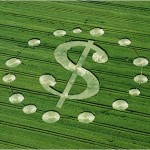 P.R. Sarkar
P.R. Sarkar
Should development schemes for the all-round elevation of an agricultural country or region and an industrial country or region be the same in theory or different from each other?
Development in the sense of all-round elevation is the summum bonum of economic activity. That is, development means integrated, compact and multi-purpose development.
Principles and theories remain unchanged although policies may vary. The agricultural portion of theory, the agricultural style of theory, should be the same. However, since circumstances vary, the approach or the application of the theory will certainly differ.
Until now the structural locus standi of agriculture has not been properly developed. In fact, all aspects of the structural side of agriculture have been neglected.
According to PROUT, agriculture should be given the status of industry. In industry raw material costs, labour costs, interest on loans, depreciation, maintenance costs, profit, the rate of out-turn, etc., are fixed and included in costing. In agriculture this has not been done, so produce is usually uneconomically priced. Farmers are forced to sell their produce at low prices due to the pressure of circumstances. This is known as a “distress sale”. If agriculture is treated as an industry, all the conditions of industry should apply to agriculture. When this occurs farmers will not be neglected, and there will not be any differentiation in the style of development and costing of agriculture and industry.
For example, Orissa produces a single crop of paddy per year. No proper irrigation exists so there is always a dearth of water, consequently peasants remain poor. But this poverty must be removed. If we recognize agriculture as an industry in Orissa, costing and pricing will be different. Costing will include the cost of seeds, labour, raw materials, pension funds, storage or inventory, depreciation, sinking funds, etc. Farmers should also include up to fifteen percent profit on their produce as part of their costs. Thus, the value of agricultural produce as an industrial output will be properly calculated.
In a proutistic economy buyers will have to purchase agricultural produce at this newly calculated price. This is the proper approach to integrated development. In such a system, farmers will not be exploited or put to needless hardship.
The Significant Value of Wealth
What is the significance of the value of wealth? In the subtle economic sense, the value of wealth is the real wealth. Wealth, if not properly defined, may mean only riches. But the value of wealth is to be measured in terms of its capacity to purchase commodities. That is, the purchasing capacity of wealth is its real value. This real value of wealth has not yet been properly understood in numerical terms by economists.
From: “Questions and Answers”, Proutist Economics
Copyright Ananda Marga Publications 2011

Other species adapted to a particular range of flowers that were in season just when they chose to become active, while some became carnivorous, and so,
within the Hymenoptera order, the bees, ants and wasps diverged
and adapted, each to their own ecological niche. One of the largest permaculture communities
in the US, Earthhaven Ecovillage, is located in the nearby town of Black Mountain.
Healthy soil means healthy plants, which allows us to grow
organic food.